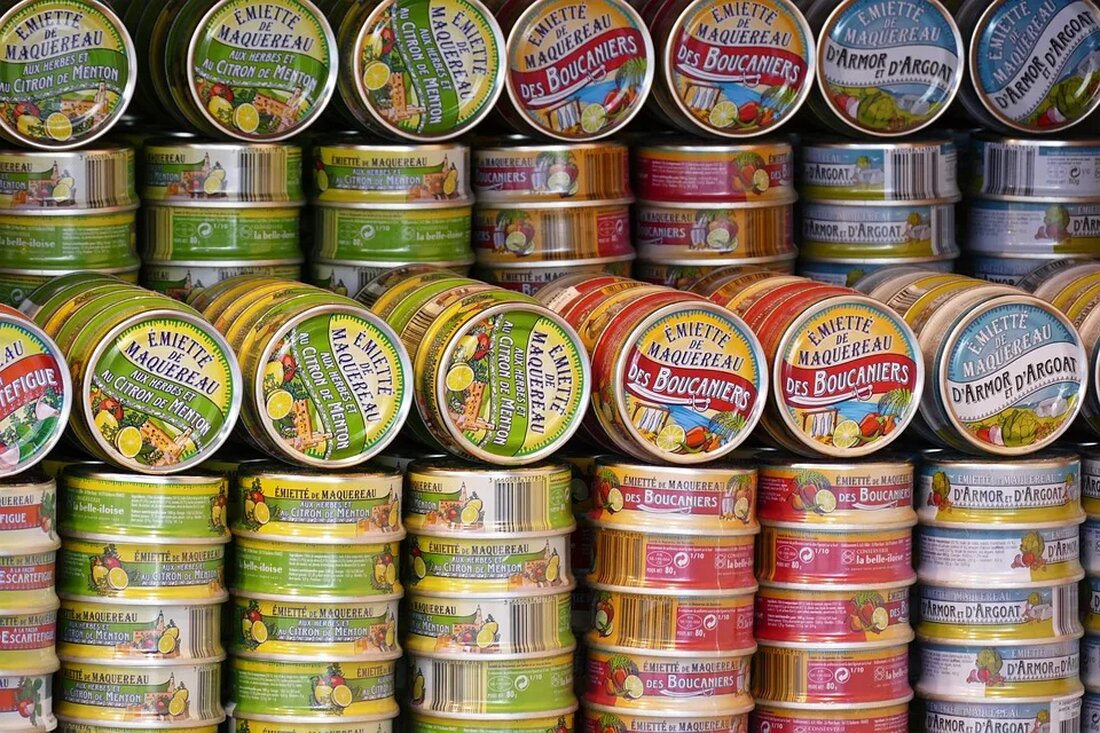Finished products: an assessment of their quality
Ready-made products: An assessment of their quality ## In today's fast-paced world, many people turn to ready-made products to save time and effort when cooking. Convenience foods, also known as convenience foods, are pre-processed foods that typically require simple preparation. But what about the quality of these products? Are they healthy and balanced, or do they contain hidden ingredients that could harm our health? In this article we will examine the various aspects of the quality of finished products and reveal the advantages and disadvantages of these products. Ingredients and nutritional value ### An important aspect when assessing the quality of finished products are the...

Finished products: an assessment of their quality
Finished products: an assessment of their quality ##
In today's fast-paced world, many people turn to convenience foods to save time and effort when cooking. Convenience foods, also known as convenience foods, are pre-processed foods that typically require simple preparation. But what about the quality of these products? Are they healthy and balanced, or do they contain hidden ingredients that could harm our health? In this article we will examine the various aspects of the quality of finished products and reveal the advantages and disadvantages of these products.
Ingredients and nutritional value ###
An important aspect when assessing the quality of finished products are the ingredients and nutritional value. These products often contain a number of additives such as preservatives, colorings and flavor enhancers. Some of these additives can be unhealthy and lead to health problems.
A look at the nutritional table on the packaging can help us get an idea of the quality of the finished product. It is important to pay attention to the sugar, fat and salt content. High levels of these ingredients can lead to various health problems such as obesity, heart problems and high blood pressure.
It is also advisable to check the fiber and vitamin content. Processed foods can tend to contain less fiber and vitamins than fresh, unprocessed foods. A balanced diet should be rich in fiber and vitamins to ensure optimal health.
Taste and sensory properties ###
Another important factor when assessing the quality of finished products is their taste and sensory properties. Many people choose convenience foods because they are convenient and taste good. However, the taste of finished products can often be artificial or over-seasoned.
A common problem with finished products is consistency. Many of these products have a long shelf life and therefore contain preservatives that can affect the consistency. Some finished products may be rubbery or mushy, making them less enjoyable.
It is important to note that good-tasting convenience foods do not necessarily have to be healthy. They often contain high amounts of sugar, salt and fat to enhance the taste. Therefore, ready-made products should not be considered part of a balanced diet.
Environmental Impact ###
Another important aspect to consider when assessing the quality of finished products is their impact on the environment. Many finished products are manufactured in large factories and require the use of energy and water. Transporting the products can also lead to increased carbon emissions.
In addition, many finished products are available in single-use packaging, which can lead to a waste of resources and increased environmental pollution. Recycling is not always a viable solution as some packaging materials are difficult to recycle.
It is therefore important to look for more environmentally friendly alternatives to ready-made products. This could mean using fresh, seasonal foods or cooking meals from scratch. Such measures can help reduce the ecological footprint and minimize environmental impact.
Health risks ###
Although ready-made products are convenient and time-saving, they also pose health risks. The high levels of sugar, salt and fat in many convenience foods can lead to obesity, diabetes, heart disease and other diet-related illnesses. Regular consumption of processed foods can also lead to a lack of fiber and important nutrients needed for optimal health.
Another problem with finished products is potential contamination with harmful bacteria or chemicals. While most processed foods are safe, there is always a risk of food poisoning or allergic reactions. It is important to follow the storage and preparation instructions on the packaging to minimize these risks.
Tips for the consumer ###
If you want to reduce your consumption of processed foods and improve the quality of your diet, there are some tips you can keep in mind:
- Lesen Sie die Zutatenliste und Nährwerttabelle sorgfältig durch, um einen besseren Einblick in die Qualität des Fertigprodukts zu erhalten.
- Wählen Sie Fertigprodukte mit niedrigem Gehalt an Zucker, Salz und gesättigten Fettsäuren.
- Achten Sie auf den Gehalt an Ballaststoffen und Vitaminen. Wählen Sie Produkte, die reich an Ballaststoffen und Vitaminen sind.
- Versuchen Sie, frische, unverarbeitete Lebensmittel in Ihre Ernährung einzubeziehen. Dies kann helfen, den Verbrauch von Fertigprodukten zu reduzieren.
- Wenn Sie Fertigprodukte kaufen, wählen Sie umweltfreundlichere Verpackungen oder suchen Sie nach Möglichkeiten, Verpackungsmaterialien zu recyceln oder wiederzuverwenden.
- Versuchen Sie, Ihre eigenen Mahlzeiten von Grund auf selbst zuzubereiten. Dies gibt Ihnen die vollständige Kontrolle über die Qualität und den Inhalt Ihrer Mahlzeiten.
Conclusion ###
The quality of finished products varies depending on the brand and product. While some processed foods can be healthy options, many of them are loaded with sugar, salt and fat and contain a variety of additives that can be harmful to our health. It's important to shop consciously and check nutritional information to make better choices. It is also advisable to include fresh, unprocessed foods in your diet and cook at home to ensure a balanced diet and reduce your environmental footprint.
You can find out more about natural and healthy nutrition in our guide magazine Your-Heilpraktiker.com

 Suche
Suche
 Mein Konto
Mein Konto
